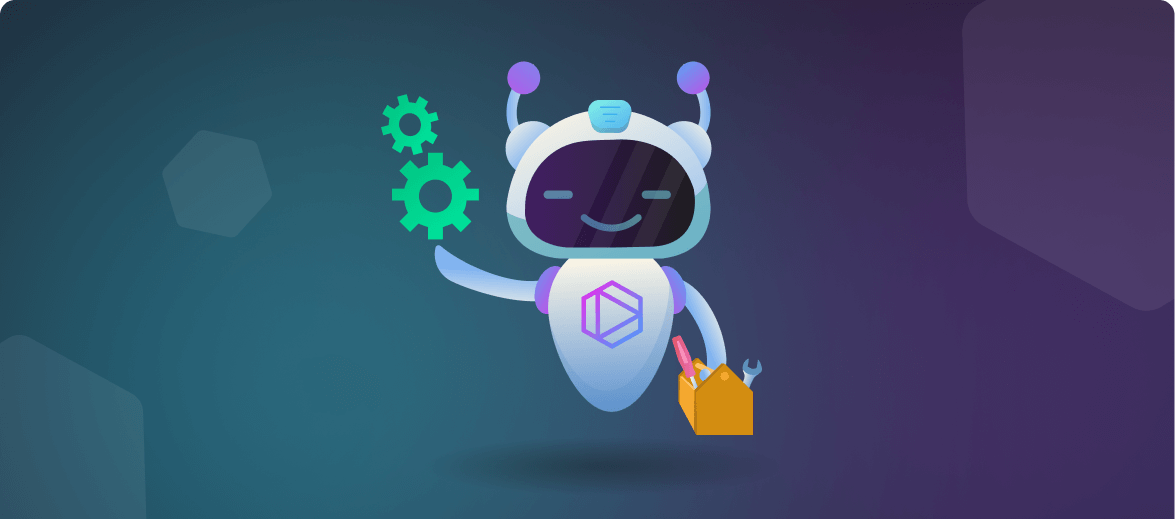Table of contents

The world of software development is constantly evolving, and as developers, we want to stay up to date on the latest technological advancements. AI has emerged as a powerful tool that can help us write better code faster and more efficiently. To shed light on how to integrate AI into your coding workflow, we recently conducted a webinar with Dror Weiss, Tabnine’s CEO, and Brandon Jung, VP of Ecosystems. Here are some of the key insights from the webinar:
The initial step in incorporating AI into your coding workflow is to carefully select an appropriate AI tool that caters to your specific needs. Tabnine, being a leading AI coding assistant software development tool, is a popular choice among developers with over a million users relying on it for faster and more accurate coding. In fact, Tabnine produces about 30% of the code generated by its users. By utilizing deep learning algorithms to analyze the context of your code, it generates intelligent suggestions in real time, thereby saving time and minimizing the chances of errors. While AI can make developers more efficient and content, it’s crucial to assess your requirements, such as privacy regulations or company policies, before opting for an AI tool.
Adding AI assistance to coding practices yields significant improvements in various aspects of software development, including code reuse, API identification, password encryption, natural language-to-code conversion, and code consistency. One major AI-powered tool in this domain is Tabnine, which offers suggestions for appropriate syntax and variable names, resulting in enhanced code quality and heightened productivity. The combination of human intelligence with AI empowers developers to automate repetitive code, maintain workflow momentum, and prevent errors, enabling them to devote more attention to creative tasks.
By adopting Tabnine Enterprise, developers can leverage contextual code suggestions that streamline repetitive coding tasks and generate high-quality, industry-standard code.
Tabnine’s code suggestions stem from large language models trained exclusively on reputable open source licenses with permissive licensing. This integration presents several advantages, including the generation of approximately 30% of the code, automation of repetitive coding tasks, consistent and high-quality code suggestions across teams, noise reduction to facilitate focused coding, and prevention of common errors.
As the AI layer for coding progresses, it’s expected to become an integral part of the development stack, playing a pivotal role in every stage of the software development lifecycle.
When integrating AI into your organization, it’s essential to evaluate options based on factors such as code suggestion quality, performance, security, and IP protection. Additionally, IDE support and the tool’s ability to learn your code are important considerations. To begin, evaluate the AI tool with a group of 15-25 developers for one month and choose an internal champion to lead the implementation. Provide quick training to ensure your team can make the most of the tool. After the pilot period, analyze the ROI and assess the subjective productivity gains. If successful, expand usage to other groups and specialize AI guidance by connecting your code and domain experts. By following these steps, you can effectively integrate AI into your organization and enjoy the benefits of improved code quality, increased productivity, and reduced errors.
Tabnine Enterprise is designed to help software engineering teams improve the quality and speed of their code development process. By using Tabnine Enterprise, teams can take advantage of various tailored features and benefits, including industry-leading security and compliance standards. Additionally, Tabnine Enterprise offers the flexibility of running the tool on-premises or in a virtual private cloud (VPC), allowing for greater control over data and infrastructure. This enables teams to fully leverage the capabilities of Tabnine while adhering to their organization’s data security policies. To learn more about how Tabnine Enterprise can benefit your organization, don’t hesitate to contact our team of enterprise experts.
When utilizing AI tools, it’s essential to be aware of the potential risks involved and take necessary precautions to manage them. These risks encompass concerns regarding privacy, security, open source usage, IP, and maintaining control over your code. Tabnine Enterprise addresses these risks by implementing robust security measures, including the avoidance of training on customer code, running the tool locally within the customer’s environment, and refraining from training on non-permissive code.
Tabnine AI code completion models can run locally, on self-hosted servers, within VPC, or completely offline, ensuring you have complete control and ensuring compliance with your organization’s policies.
Tabnine models are exclusively trained on repositories with permissive open source licenses. The platform follows strict protocols where customer code is used solely for model querying and is immediately discarded after the query. Your code is never stored, shared, or incorporated into Tabnine’s open source trained AI model, ensuring the confidentiality of your proprietary code.
By considering these factors you can effectively manage the risks associated with AI integration into your coding practices.
Try Tabnine for free today or contact us to learn how we can help accelerate your software development.
In conclusion, integrating AI into your coding workflow can be a game-changer for developers, enabling them to write better code faster and more efficiently. By selecting the right AI tool for your specific needs, managing the potential risks associated with AI use, and leveraging the full potential of AI for code generation, review, optimization, and project management, you can take your coding workflow to the next level. To learn more about Tabnine and how it can help you optimize your coding workflow, check out the video of our recent webinar.